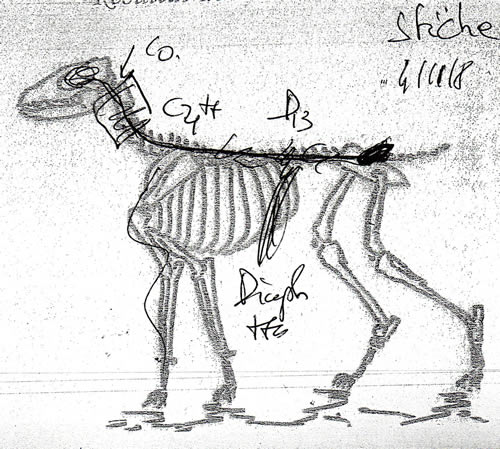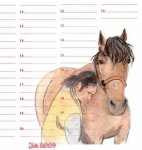In the small dog, and moreover in brachycephalic dogs (ie with short squashed nose), it is quite frequent to see a dog with neck ache, and visible muscular spasms on the neck and shoulders, which screams so loud at each movement that the owner is lost, has enough of it or feel guilty?
The undermine pathology is often a herniated cervical disc (except for the cases of tumors etc..) which could be seen on a radiography, radiography with contrast product in the spinal canal, on a scanner.
The treatment is surgical if the nerve damage is important, otherwise, it is better not to use this option. The paliatif medical treatment brings some relief (low doses corticosteroids better in my opinion than nonsteroidal antiinflammatory drugs). A minerva can bring a real confort.
But further than this, there is osteopahty...And for what I know here more than anywhere else, cervicalgy is the alarm light for worn of brakes, it is then necessary to look for the brakes and change them rather than worry about the light.
Understand by this, that the herniated disc is the result of a wrong body force lines report that leads to compression of the disc which finally looses its elasticity and ruptures. Healing will be difficult if the so called forces keep on putting pressure on the poor disc. On the contrary, one only has to globaly lift up the tensions to see the body force lines come back to their physiological position. The disc is then immediately freed and can, at least, start moving out of the spinal canal, and even start healing if it is already damaged.
In this, osteopathy, with the help or not of usual medications, brings a real improvement in the treatment.
However, the screams are such that they stress the owner greatly and this stress is felt by the dog in return. It is then necessary to explain the owner what these screams mean in this case.
The first natural explanation is the pain due to the hernia. Though, on my clinician faith, a lumbar or dorsal hernia never induces so many screams, why???
Turned and dilated stomacs are so painfull that they lead to fatal shock, but never bring such screamings. Then, why?
The anatomy will give us an explanation which seems to me quite timely.
This hernia, irritating the nerves, induces muscular spasms, easily noticeable after any manual stimulation of the neck. Though, in this zone, there is an organ...the larynx, which has vocal cords of whom contractions change the voice, the scream. Though if there are some visible superficial muscular reflex spasms, there is also certainly vocal cords spasm, which then start screaming.
Then, I propose the following hypothesis, supported by tens of cases, that the screaming heard is not linked to the intensity of the pain, but only the result of an internal spasm of the vocal cords, triggered by exagerated stimulation of the surrounded nerves.
This way of looking at it, takes off the owner’s culpability who is often afraid that one would think he is treating his dog badly, who has no interesting results with the treatment given. And it allows him to treat it as a spasm: transversal deep and very slow massage, letting him be active during the crisis.
It also allows to count the time between crisis and their intensity instead of thinking that the animal is sour or that ’he has done another one’ ; and then to observe that improvement does not mean : ’no crisis’ but crisis which occur less often and are shorter.
Then let’s body "self healing", dear to Still, work...and very often within a few consultations, remission is obtained.
’Stiche’ has been screaming for a month, has cervical spasms, limps only mildly but stays still. No medical imaging diagnostic is done, the owners not wanting any as they can not afford surgery following it.
He is refered for an osteopathic consultation, which gives the following results:

The main tension spot is on the caudectomy scar done to this French Bulldog at birth. The scar must take and disturb the filum terminale.
The other tensed part is the thoracic diaphragm.
The hernia is supposed to be between C4 and C0, but it will not be the main object of the treatment.
Those ones will be the tail and the sacrum ; thinking of it, the owner remembers that the dog has always been sensitive when petted in this area.
Treatment is highly appreciated : strong yawnings, sleepiness. Afterwards, walking seems more fluid.
Conclusion
This is just a case among many others, with always the same observation: the origin of the hernia is elsewhere in the body and very anterior in time. Treatment has to go back to the source.
The screamings are spectacular and stressfull but have to be put back to their real value: as reflex spasms...and not a sign of pain.
| Name | breed | place of hernia | Symptoms | length Pathos | primary dysfunction | remission, length |
| sthiche | french bulldog | C4/CO | screamings,spasms | 1 month | scar caudectomy | ? |
| * | * | * | * | * | * | * |
| votre cas | ajoutez le | cliquez sur | répondre | à | cet article | dessous ! |



